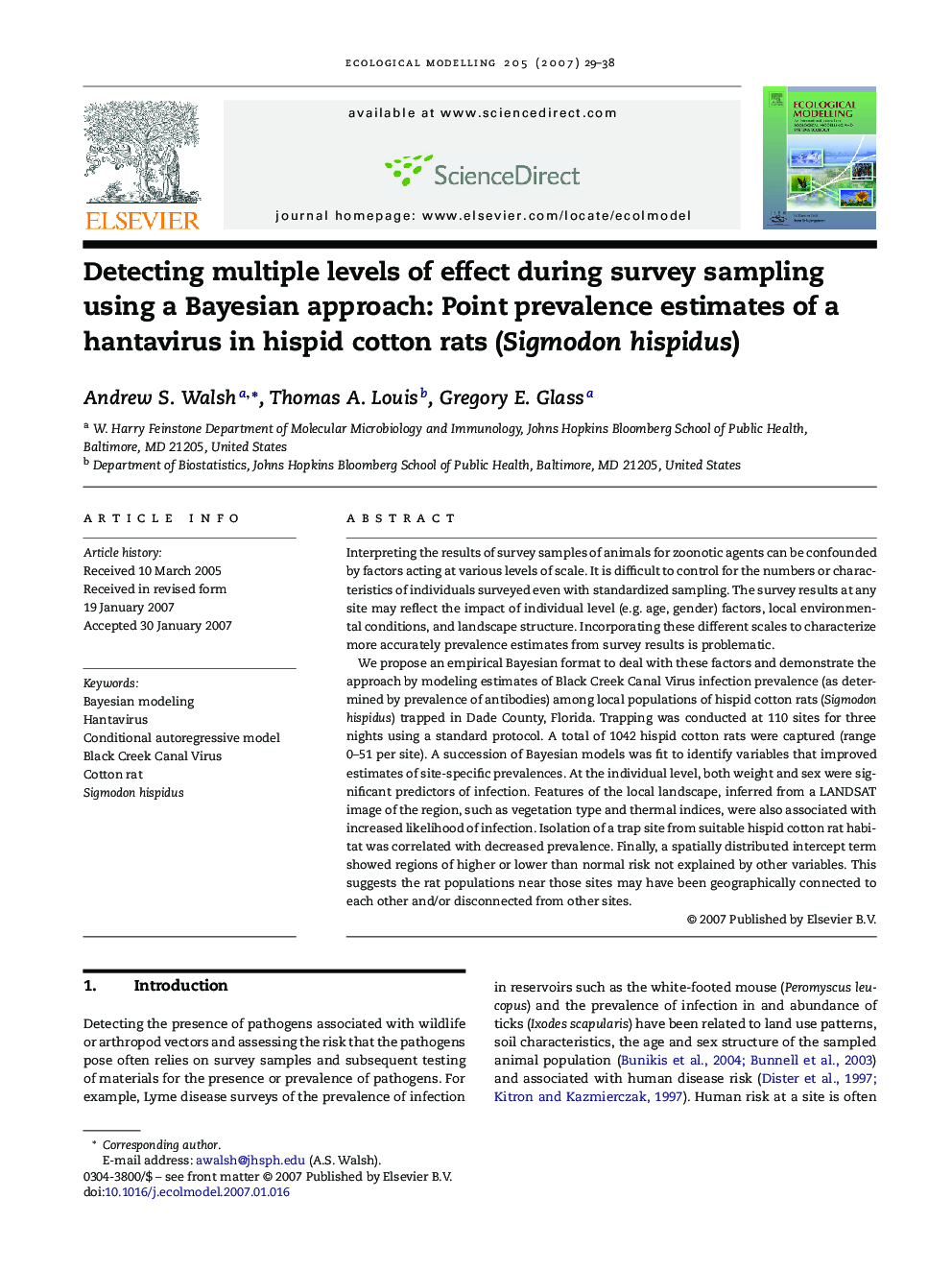| کد مقاله | کد نشریه | سال انتشار | مقاله انگلیسی | نسخه تمام متن |
|---|---|---|---|---|
| 4378600 | 1617547 | 2007 | 10 صفحه PDF | دانلود رایگان |

Interpreting the results of survey samples of animals for zoonotic agents can be confounded by factors acting at various levels of scale. It is difficult to control for the numbers or characteristics of individuals surveyed even with standardized sampling. The survey results at any site may reflect the impact of individual level (e.g. age, gender) factors, local environmental conditions, and landscape structure. Incorporating these different scales to characterize more accurately prevalence estimates from survey results is problematic.We propose an empirical Bayesian format to deal with these factors and demonstrate the approach by modeling estimates of Black Creek Canal Virus infection prevalence (as determined by prevalence of antibodies) among local populations of hispid cotton rats (Sigmodon hispidus) trapped in Dade County, Florida. Trapping was conducted at 110 sites for three nights using a standard protocol. A total of 1042 hispid cotton rats were captured (range 0–51 per site). A succession of Bayesian models was fit to identify variables that improved estimates of site-specific prevalences. At the individual level, both weight and sex were significant predictors of infection. Features of the local landscape, inferred from a LANDSAT image of the region, such as vegetation type and thermal indices, were also associated with increased likelihood of infection. Isolation of a trap site from suitable hispid cotton rat habitat was correlated with decreased prevalence. Finally, a spatially distributed intercept term showed regions of higher or lower than normal risk not explained by other variables. This suggests the rat populations near those sites may have been geographically connected to each other and/or disconnected from other sites.
Journal: Ecological Modelling - Volume 205, Issues 1–2, 10 July 2007, Pages 29–38